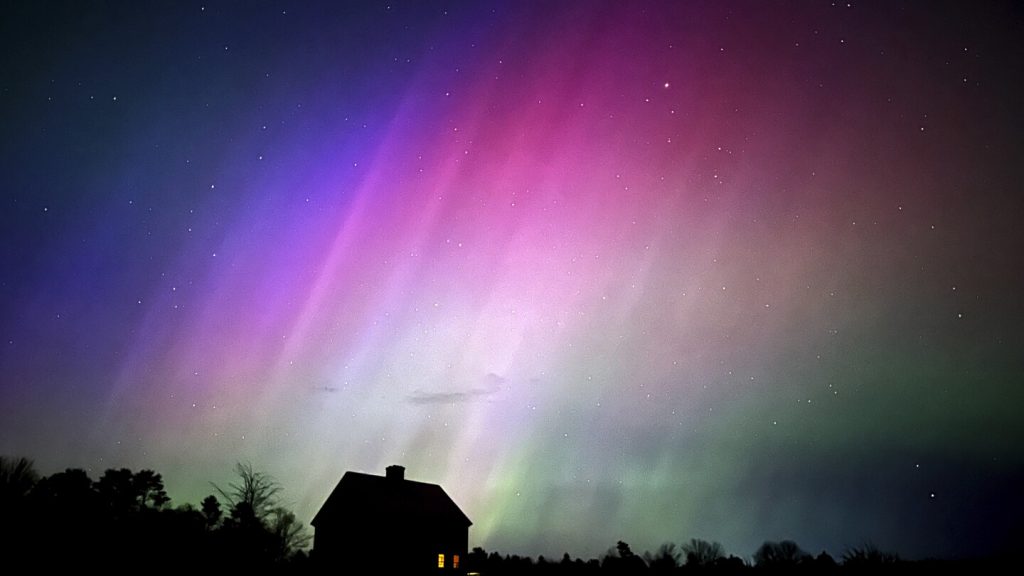A rare severe geomagnetic storm warning was issued by the National Oceanic and Atmospheric Administration due to a strong solar storm hitting Earth. The effects of this storm were anticipated to last through the weekend and possibly into the following week. Operators of power plants, spacecraft in orbit, and the Federal Emergency Management Agency were alerted to take necessary precautions. While most people on Earth would not be directly impacted, the storm could potentially disrupt power and communications.
The storm was predicted to produce northern lights as far south in the U.S. as Alabama and Northern California. However, experts emphasized that the auroras would not be as dramatic as the typical curtains of color associated with the northern lights, but more like splashes of greenish hues. The best aurora views were suggested to come from phone cameras, rather than the naked eye, as they are better at capturing light. The solar storm could potentially provide a nice treat for those who snap a picture of the sky, according to the prediction center’s operations chief, Mike Bettwy.
The possibility of experiencing the most intense solar storm since the one recorded in 1859, which prompted auroras in central America, was mentioned. While it was not anticipated to have the same level of impact, the storm could come close to that historic event. The risk posed by the storm included potential disruptions to high-voltage transmission lines for power grids, as well as potential effects on satellites that could disrupt navigation and communication services on Earth. A similar extreme geomagnetic storm in 2003 caused power outages in Sweden and damaged power transformers in South Africa.
The sun had been producing strong solar flares since Wednesday, resulting in multiple outbursts of plasma. Each eruption, known as a coronal mass ejection, could contain billions of tons of plasma and magnetic field from the sun’s outer atmosphere. The solar activity was mentioned to be ramping up as the sun approaches the peak of its 11-year cycle. NASA assured that the storm posed no serious threat to the astronauts aboard the International Space Station, with the biggest concern being increased radiation levels. While sensitive instruments on NASA’s science satellites may be turned off to avoid damage, the space agency’s heliophysics science division assured that the ongoing solar activity was being closely monitored.
Overall, the solar storm was seen as an opportunity for scientists to observe and study such phenomena. Multiple sun-focused spacecraft were monitoring the activity, with the heliophysics science division highlighting that this was the type of event they were eager to observe. The Associated Press Health and Science Department, supported by the Howard Hughes Medical Institute’s Science and Educational Media Group, was responsible for the content. The anticipation of potential auroras in the U.S. and the precautions taken by relevant agencies and organizations in response to the solar storm were the focus of the report.


